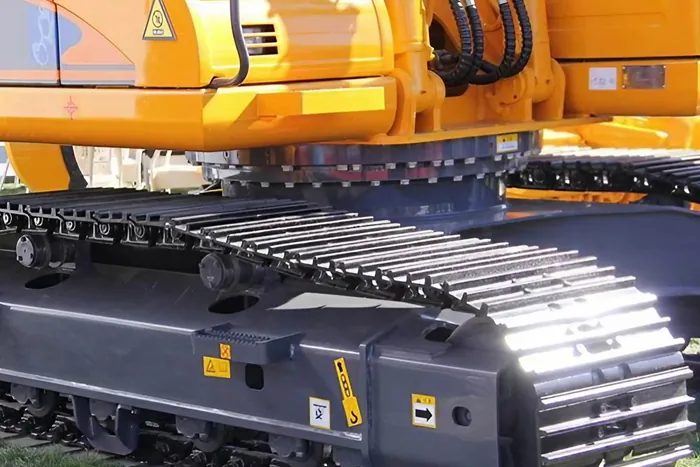Selecting a Slewing Bearing: Key Factors and Step-by-Step Guide

Introduction
slewing bearings are crucial components in various industrial applications, including cranes, excavators, and wind turbines. Selecting the appropriate slewing bearing involves careful consideration of multiple factors to ensure optimal performance and longevity. This guide provides a detailed, step-by-step approach to choosing the right slewing bearing for your specific needs.
Factors to Consider When Selecting a Slewing Bearing
When choosing a slewing bearing, several factors need to be taken into account to ensure it meets the operational and performance requirements of the equipment. Here are the key considerations:
load capacity: Assess the maximum axial, radial, and moment loads the bearing will encounter.
Operating Environment: Consider environmental conditions such as temperature, humidity, and exposure to contaminants.
Rotational Speed: Determine the required rotational speed and any limitations related to it.
Precision Requirements: Evaluate the necessary precision for the application, including any specific tolerance levels.
Space Constraints: Take into account the available space for the bearing and associated components.
Installation and maintenance: Consider ease of installation and maintenance requirements to minimize downtime.
Step-by-Step Guide to Selecting the Right Slewing Bearing
Step 1: DeterMine Equipment Requirements
The first step in selecting a slewing bearing is understanding the specific requirements of the equipment. This includes identifying the operational parameters, such as:
Application Type: Define the type of equipment and its primary functions.
Load Conditions: Determine the types and magnitudes of loads (axial, radial, moment) the bearing will support.
Movement and Rotation: Identify the required range of motion and rotational speed.
Step 2: Calculate Maximum Bearing Load
Accurately calculating the maximum bearing load is essential for selecting a suitable slewing bearing. This involves:
Axial Load: The force parallel to the axis of rotation.
Radial Load: The force perpendicular to the axis of rotation.
Moment Load: The torque around the axis.
Use formulas and guidelines provided by bearing manufacturers to compute these loads.
Step 3: Apply Service Factors
Service factors account for variations in load, speed, and operating conditions. These factors help ensure the selected bearing can withstand unexpected stresses. Common service factors include:
Safety Factor: Typically ranges from 1.2 to 1.5, depending on the criticality of the application.
Load Factor: Adjustments based on the nature of the load (steady, variable, shock).
Step 4: Assess Equipment Requirements
Evaluate the specific demands of the equipment, including:
Durability: The expected lifespan of the bearing under the given conditions.
Reliability: The bearing's ability to perform consistently without frequent failures.
Step 5: Plan Installation Arrangements
Proper installation is crucial for bearing performance. Consider the following:
Mounting Surface: Ensure the surface is flat, rigid, and clean.
Fastening Method: Determine the appropriate bolts, torque values, and securing methods.
Step 6: Inspect Bearing Type and Cross-Section
Slewing bearings come in various types and cross-sections. Choose the one that best fits your application:
Ball Bearings: Suitable for lighter loads and higher speeds.
Roller Bearings: Ideal for heavier loads and lower speeds.
Crossed Roller Bearings: Offer high rigidity and precision.
Step 7: Preliminary Bearing Selection
Based on the previous steps, make an initial selection of a slewing bearing. Consider the following:
Catalog Review: Refer to manufacturer catalogs to match the bearing type with the calculated loads and dimensions.
Technical Support: Consult with bearing suppliers for recommendations and detailed specifications.
Step 8: Gear Size and Quality Check
For bearings with integrated gears, verify the gear size and quality:
Gear Module: Ensure it matches the drive system requirements.
Gear Quality: Check for appropriate heat treatment, surface finish, and dimensional accuracy.
Step 9: Finalize Bearing Selection
After preliminary selection, conduct a thorough review to finalize the bearing choice:
Performance Validation: Run simulations or tests to confirm the bearing's performance under expected conditions.
Cost Analysis: Evaluate the total cost, including purchase price, installation, and maintenance expenses.
Conclusion
Selecting the right slewing bearing is a critical process that involves careful analysis of load capacities, operating conditions, and specific equipment requirements. By following this step-by-step guide, you can ensure optimal performance and longevity for your slewing bearings, ultimately enhancing the efficiency and reliability of your equipment.
Why Choose SAIVS™ as Your Supplier?
Committed to innovation and customer needs, SAIVS specializes in high-quality machinery components for diverse industries like construction, mining, and agriculture. They offer a wide range of parts, including undercarriage components for popular brands, ensuring optimal performance and durability. values customer satisfaction, providing competitive prices, fast shipping, and exceptional service to keep your operations running smoothly.